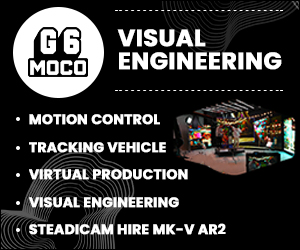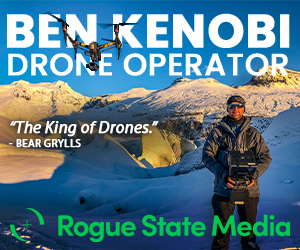Broadcast News
23/05/2016
Going The Distance With SDI

The Serial Digital Interface (SDI) standard was first introduced back in 1989 and quickly became established as the digital video interface of choice for broadcast and professional use.
One of the main reasons for the success of SDI was the fact that it used the same coax cable and BNC connectors as the analog video standard that had preceded it. This meant that broadcasters could make the upgrade to digital video without having to completely rewire their facilities or replace all their cables and patch panels, thus reducing the cost of entry.
The original SDI standard has since been joined by HD-SDI and 3G-SDI, which add HD capability, and more recently 6G-SDI and 12G-SDI, which add Ultra HD capability. Each of these new standards builds on the last while retaining the same BNC connectors and coaxial cable.
It would be easy to fall into the trap of thinking we could simply replace our SD equipment with HD or Ultra HD equivalents and keep all our cabling infrastructure the same, but in practice it is not always so simple. As video resolution has increased from SD to HD to UltraHD, the SDI bit rate has increased dramatically from 270 Mb/s to 11.88 Gb/s, which in turn places increased demands on the cabling infrastructure that we use. In practical terms this greatly reduces the cable lengths that can be used, and some older or lower cost cables may not be usable at all.
If we take a look at the technical specifications for a typical piece of broadcast equipment, we will usually find a table indicating the maximum length of cable that can be used for each supported video standard. For example:
Max. Cable Length (Belden 1694A) – Bit Rate
m 250 – Mbit/s 270
m 140 – Gbit/s 1.5
m 80 – Gbit/s 3
The table lists the performance that can be expected with a particular type of cable, in this case Belden 1694A. However, even these figures do not tell the whole story and practical cable runs are often significantly shorter.
The actual length of cable over which SDI can be successfully sent and recovered depends on a number of factors including:
• Type and quality of the cable
• Number of joins in the cable run
• Kinks or damage to the cable
• Quality of the BNC terminations
• Quality of the equipment at each end of the cable
Any of these items can cause signal degradation and in combination they can cause a significant reduction in the usable cable length. There are two underlying issues at play here: cable losses and impedance mismatch.
Cable Losses
An ideal video cable would transfer all of the SDI signal power from the source equipment to the destination with no losses, but in the real world, DC resistance and parasitic capacitance act together like a low pass filter. As the cable length increases, the signal amplitude is reduced and the higher frequencies roll off, causing significant degradation to the video signal. Because high frequencies are attenuated the most, HD and UltraHD signals are affected much more than SD. Cable quality really does make a difference here so high quality, low loss cables should always be used for HD and Ultra HD unless you only plan to go a few meters.
Impedance Mismatches
To efficiently transfer the SDI signal from one end of the cable run to the other also requires a uniform 75 ohm impedance along the cable length. Any variations in impedance result in a "mismatch" that causes some of the signal power to be reflected back down the cable in the opposite direction. This reflected signal power does not reach the destination equipment, so the usable cable length is reduced. Impedance mismatches can be caused by poorly designed equipment, badly terminated connectors or even a crushed, kinked or damaged cable.
Maximizing Usable Cable Length
Follow these simple rules of thumb to maximize usable cable length:
• Use good quality low loss cable
• Use good quality connectors
• Repair or discard poorly terminated, kinked and crushed cables
• Avoid joins in the cable
• Limit the use of patch panels
Extending SDI Transmission Distance
In some applications an SDI video signal just cannot reach far enough. You might have an Ultra HD camera on the far side of a sports field, or video monitors in far flung halls of a convention centre. In these instances another solution is required.
The range of an SDI signal can be doubled by inserting a good quality reclocking distribution amplifier (DA) in the middle of the cable run. The DA includes an equalizer, which compensates for cable losses at the input, and a reclocker which regenerates the video clock to remove jitter from the video signal. The output of the DA is a fully restored version of the degraded signal at its input.
For even longer distances the SDI signal can be transmitted over fiber optic cable. A small SDI to optical fiber media converter is used to convert from electrical to optical format without altering the video information in any way, and at the other end of the fiber another media converter is used to convert back to coaxial cable. The optical signal can be sent over several kilometres of fiber with no loss of quality.
Ripcord Designs is a UK-based manufacturer of high quality broadcast equipment for the budget-conscious AV professional. Through our own web shop we offer a range of broadcast converters that can extend the reach of SDI signals from SD to Ultra HD.
Our line-up of reclocking distribution amplifiers includes the MC-DA-3G which works with all SDI formats up to 3G-SDI, and the MC-DA-12G which adds 6G and 12G-SDI capability. When longer distances must be covered we offer a range of media converters capable of transporting SD, HD and 3G SDI over 10 kilometers of single mode fiber.
In addition to manufacturing our own products we also provide our design services to other broadcast manufacturers. From contract electronic and software work to full turnkey product design, we have it covered.
www.ripcorddesigns.com
(JP/LM)
One of the main reasons for the success of SDI was the fact that it used the same coax cable and BNC connectors as the analog video standard that had preceded it. This meant that broadcasters could make the upgrade to digital video without having to completely rewire their facilities or replace all their cables and patch panels, thus reducing the cost of entry.
The original SDI standard has since been joined by HD-SDI and 3G-SDI, which add HD capability, and more recently 6G-SDI and 12G-SDI, which add Ultra HD capability. Each of these new standards builds on the last while retaining the same BNC connectors and coaxial cable.
It would be easy to fall into the trap of thinking we could simply replace our SD equipment with HD or Ultra HD equivalents and keep all our cabling infrastructure the same, but in practice it is not always so simple. As video resolution has increased from SD to HD to UltraHD, the SDI bit rate has increased dramatically from 270 Mb/s to 11.88 Gb/s, which in turn places increased demands on the cabling infrastructure that we use. In practical terms this greatly reduces the cable lengths that can be used, and some older or lower cost cables may not be usable at all.
If we take a look at the technical specifications for a typical piece of broadcast equipment, we will usually find a table indicating the maximum length of cable that can be used for each supported video standard. For example:
Max. Cable Length (Belden 1694A) – Bit Rate
m 250 – Mbit/s 270
m 140 – Gbit/s 1.5
m 80 – Gbit/s 3
The table lists the performance that can be expected with a particular type of cable, in this case Belden 1694A. However, even these figures do not tell the whole story and practical cable runs are often significantly shorter.
The actual length of cable over which SDI can be successfully sent and recovered depends on a number of factors including:
• Type and quality of the cable
• Number of joins in the cable run
• Kinks or damage to the cable
• Quality of the BNC terminations
• Quality of the equipment at each end of the cable
Any of these items can cause signal degradation and in combination they can cause a significant reduction in the usable cable length. There are two underlying issues at play here: cable losses and impedance mismatch.
Cable Losses
An ideal video cable would transfer all of the SDI signal power from the source equipment to the destination with no losses, but in the real world, DC resistance and parasitic capacitance act together like a low pass filter. As the cable length increases, the signal amplitude is reduced and the higher frequencies roll off, causing significant degradation to the video signal. Because high frequencies are attenuated the most, HD and UltraHD signals are affected much more than SD. Cable quality really does make a difference here so high quality, low loss cables should always be used for HD and Ultra HD unless you only plan to go a few meters.
Impedance Mismatches
To efficiently transfer the SDI signal from one end of the cable run to the other also requires a uniform 75 ohm impedance along the cable length. Any variations in impedance result in a "mismatch" that causes some of the signal power to be reflected back down the cable in the opposite direction. This reflected signal power does not reach the destination equipment, so the usable cable length is reduced. Impedance mismatches can be caused by poorly designed equipment, badly terminated connectors or even a crushed, kinked or damaged cable.
Maximizing Usable Cable Length
Follow these simple rules of thumb to maximize usable cable length:
• Use good quality low loss cable
• Use good quality connectors
• Repair or discard poorly terminated, kinked and crushed cables
• Avoid joins in the cable
• Limit the use of patch panels
Extending SDI Transmission Distance
In some applications an SDI video signal just cannot reach far enough. You might have an Ultra HD camera on the far side of a sports field, or video monitors in far flung halls of a convention centre. In these instances another solution is required.
The range of an SDI signal can be doubled by inserting a good quality reclocking distribution amplifier (DA) in the middle of the cable run. The DA includes an equalizer, which compensates for cable losses at the input, and a reclocker which regenerates the video clock to remove jitter from the video signal. The output of the DA is a fully restored version of the degraded signal at its input.
For even longer distances the SDI signal can be transmitted over fiber optic cable. A small SDI to optical fiber media converter is used to convert from electrical to optical format without altering the video information in any way, and at the other end of the fiber another media converter is used to convert back to coaxial cable. The optical signal can be sent over several kilometres of fiber with no loss of quality.
Ripcord Designs is a UK-based manufacturer of high quality broadcast equipment for the budget-conscious AV professional. Through our own web shop we offer a range of broadcast converters that can extend the reach of SDI signals from SD to Ultra HD.
Our line-up of reclocking distribution amplifiers includes the MC-DA-3G which works with all SDI formats up to 3G-SDI, and the MC-DA-12G which adds 6G and 12G-SDI capability. When longer distances must be covered we offer a range of media converters capable of transporting SD, HD and 3G SDI over 10 kilometers of single mode fiber.
In addition to manufacturing our own products we also provide our design services to other broadcast manufacturers. From contract electronic and software work to full turnkey product design, we have it covered.
www.ripcorddesigns.com
(JP/LM)
Top Related Stories
Click here for the latest broadcast news stories.
07/11/2018
TVS Cable Deploys Harmonic's CableOS™ Virtualized Cable Access Solution
TVS Cable has deployed Harmonic's CableOS™ virtualized cable access solution for new DOCSIS 3.1 broadband services. The industry's first software-base
TVS Cable Deploys Harmonic's CableOS™ Virtualized Cable Access Solution
TVS Cable has deployed Harmonic's CableOS™ virtualized cable access solution for new DOCSIS 3.1 broadband services. The industry's first software-base
16/08/2016
Argosy Cable: Cable Feature
This article has been contributed by Argosy Cable. While it's not always considered the most exciting topic, cabling is always mission critical to the
Argosy Cable: Cable Feature
This article has been contributed by Argosy Cable. While it's not always considered the most exciting topic, cabling is always mission critical to the
25/08/2005
Telecast unveils new SG5070 fibre optic HD/SDI multiformat signal generator
The new SG5070 SDI-HD/SDI video signal generator, introduced by Telecast Fiber Systems, provides broadcasters with a convenient and affordable alterna
Telecast unveils new SG5070 fibre optic HD/SDI multiformat signal generator
The new SG5070 SDI-HD/SDI video signal generator, introduced by Telecast Fiber Systems, provides broadcasters with a convenient and affordable alterna
08/04/2005
Gefen unveils HD SDI connectivity and conversion solutions for AV and broadcast sectors
New HD serial data interface (HD SDI) equipment on display at NAB from Gefen include a 4x2 HD SDI Switcher, 1:4 HD SDI Splitter, HD SDI to DVI Convert
Gefen unveils HD SDI connectivity and conversion solutions for AV and broadcast sectors
New HD serial data interface (HD SDI) equipment on display at NAB from Gefen include a 4x2 HD SDI Switcher, 1:4 HD SDI Splitter, HD SDI to DVI Convert
01/08/2024
Wohler Announces 3G-SDI To 12G-SDI Upgrade Path
Wohler Technologies has announced the availability of a new Module option for it's iSeries and in-rack Audio and Video monitoring products. This new m
Wohler Announces 3G-SDI To 12G-SDI Upgrade Path
Wohler Technologies has announced the availability of a new Module option for it's iSeries and in-rack Audio and Video monitoring products. This new m
20/03/2013
Artel Video Sytems Launch HD-SDI Video-Over-IP Gateway
Artel Video Systems has announced its new HD-SDI Video-over-IP Gateway — the DLC450. Designed as a cost-effective solution for transport of uncompress
Artel Video Sytems Launch HD-SDI Video-Over-IP Gateway
Artel Video Systems has announced its new HD-SDI Video-over-IP Gateway — the DLC450. Designed as a cost-effective solution for transport of uncompress
23/02/2012
Canford Unveil HD Video Cable & Wireless Viewfinder
Canford unveiled a slate of new products to the UK at the recent Broadcast Video Expo in London. A new extended performance version of their 3G HD- SD
Canford Unveil HD Video Cable & Wireless Viewfinder
Canford unveiled a slate of new products to the UK at the recent Broadcast Video Expo in London. A new extended performance version of their 3G HD- SD
19/01/2012
New HD Video Cable From Canford At BVE
Canford to unveil new sizes in their installation cable range at the upcoming BVE event adding them to an already long list of exhibitors set to showc
New HD Video Cable From Canford At BVE
Canford to unveil new sizes in their installation cable range at the upcoming BVE event adding them to an already long list of exhibitors set to showc
25/08/2008
Belden Introduces Plenum Mini Digital Coax Cables For High Quality HD, SDI, And Digital Video Applications
As the first mini digital coax in the industry, Belden's 1855P cable is designed and engineered to deliver the same outstanding digital video signal t
Belden Introduces Plenum Mini Digital Coax Cables For High Quality HD, SDI, And Digital Video Applications
As the first mini digital coax in the industry, Belden's 1855P cable is designed and engineered to deliver the same outstanding digital video signal t
20/07/2009
Belden HDMI Cable Offers Superior Digital Video And Audio Quality
In today's fast paced entertainment media market, there is one element that is rapidly evolving - home theatre. It is an exciting option which is prov
Belden HDMI Cable Offers Superior Digital Video And Audio Quality
In today's fast paced entertainment media market, there is one element that is rapidly evolving - home theatre. It is an exciting option which is prov
26/02/2015
TESERA Broadcast Video Servers To Be Built On Matrox X.mio3 SDI Video Cards
Matrox Video has announced that next generation TESERA broadcast video servers from 360 Systems will be built on Matrox X.mio3 SDI video cards. TESERA
TESERA Broadcast Video Servers To Be Built On Matrox X.mio3 SDI Video Cards
Matrox Video has announced that next generation TESERA broadcast video servers from 360 Systems will be built on Matrox X.mio3 SDI video cards. TESERA
28/01/2009
MicroVideo Keeps Video And Audio In-Sync With SDI Video Delay Processor
MicroVideo, a leading supplier of signal processing and data insertion technologies for the broadcast, IPTV, cable and satellite, has announced the la
MicroVideo Keeps Video And Audio In-Sync With SDI Video Delay Processor
MicroVideo, a leading supplier of signal processing and data insertion technologies for the broadcast, IPTV, cable and satellite, has announced the la
12/01/2009
Blackmagic Design Announces DeckLink SDI
Blackmagic Design has announced DeckLink SDI, a new model of capture card which combines highest quality 10 bit SD/HD-SDI capture and playback with an
Blackmagic Design Announces DeckLink SDI
Blackmagic Design has announced DeckLink SDI, a new model of capture card which combines highest quality 10 bit SD/HD-SDI capture and playback with an
28/08/2013
TSL Reveal 3G HD-SDI Video Preview And SMPTE Timecode Reading
TSL Products, manufacturer of surround sound microphones, audio monitoring and processing equipment, broadcast control systems and power management so
TSL Reveal 3G HD-SDI Video Preview And SMPTE Timecode Reading
TSL Products, manufacturer of surround sound microphones, audio monitoring and processing equipment, broadcast control systems and power management so
26/08/2008
Ross Video Releases New HD/SD SDI Mixer/Keyer
A designer and manufacturers of a wide range of innovative products for use in live production applications, Ross VIdeo, has announced the release of
Ross Video Releases New HD/SD SDI Mixer/Keyer
A designer and manufacturers of a wide range of innovative products for use in live production applications, Ross VIdeo, has announced the release of















